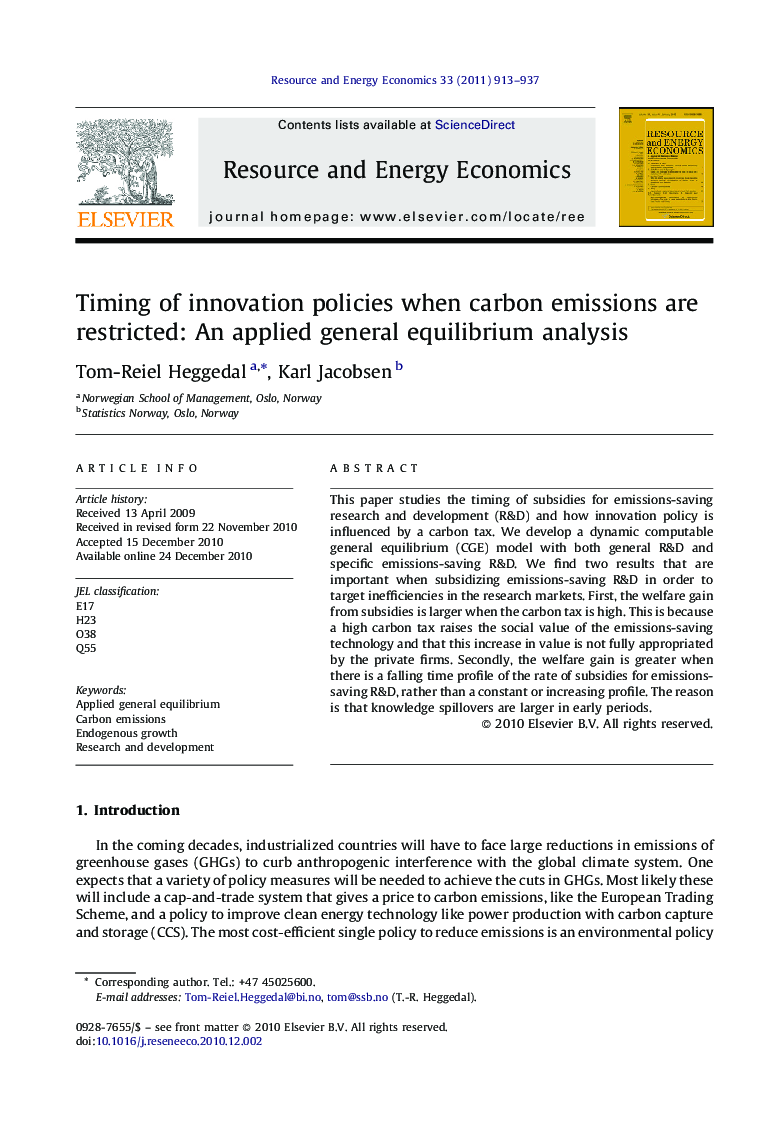| Article ID | Journal | Published Year | Pages | File Type |
|---|---|---|---|---|
| 985479 | Resource and Energy Economics | 2011 | 25 Pages |
This paper studies the timing of subsidies for emissions-saving research and development (R&D) and how innovation policy is influenced by a carbon tax. We develop a dynamic computable general equilibrium (CGE) model with both general R&D and specific emissions-saving R&D. We find two results that are important when subsidizing emissions-saving R&D in order to target inefficiencies in the research markets. First, the welfare gain from subsidies is larger when the carbon tax is high. This is because a high carbon tax raises the social value of the emissions-saving technology and that this increase in value is not fully appropriated by the private firms. Secondly, the welfare gain is greater when there is a falling time profile of the rate of subsidies for emissions-saving R&D, rather than a constant or increasing profile. The reason is that knowledge spillovers are larger in early periods.
